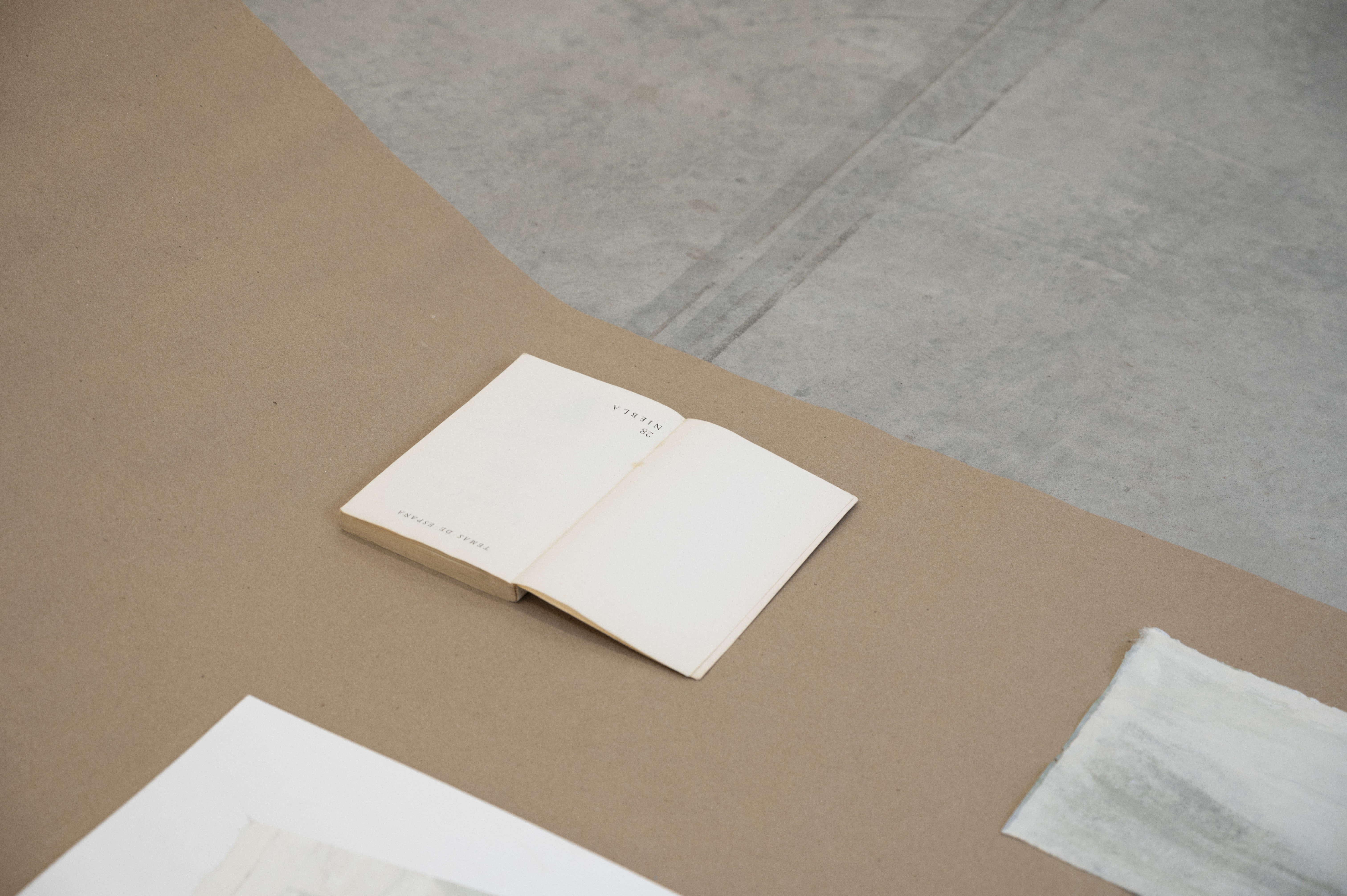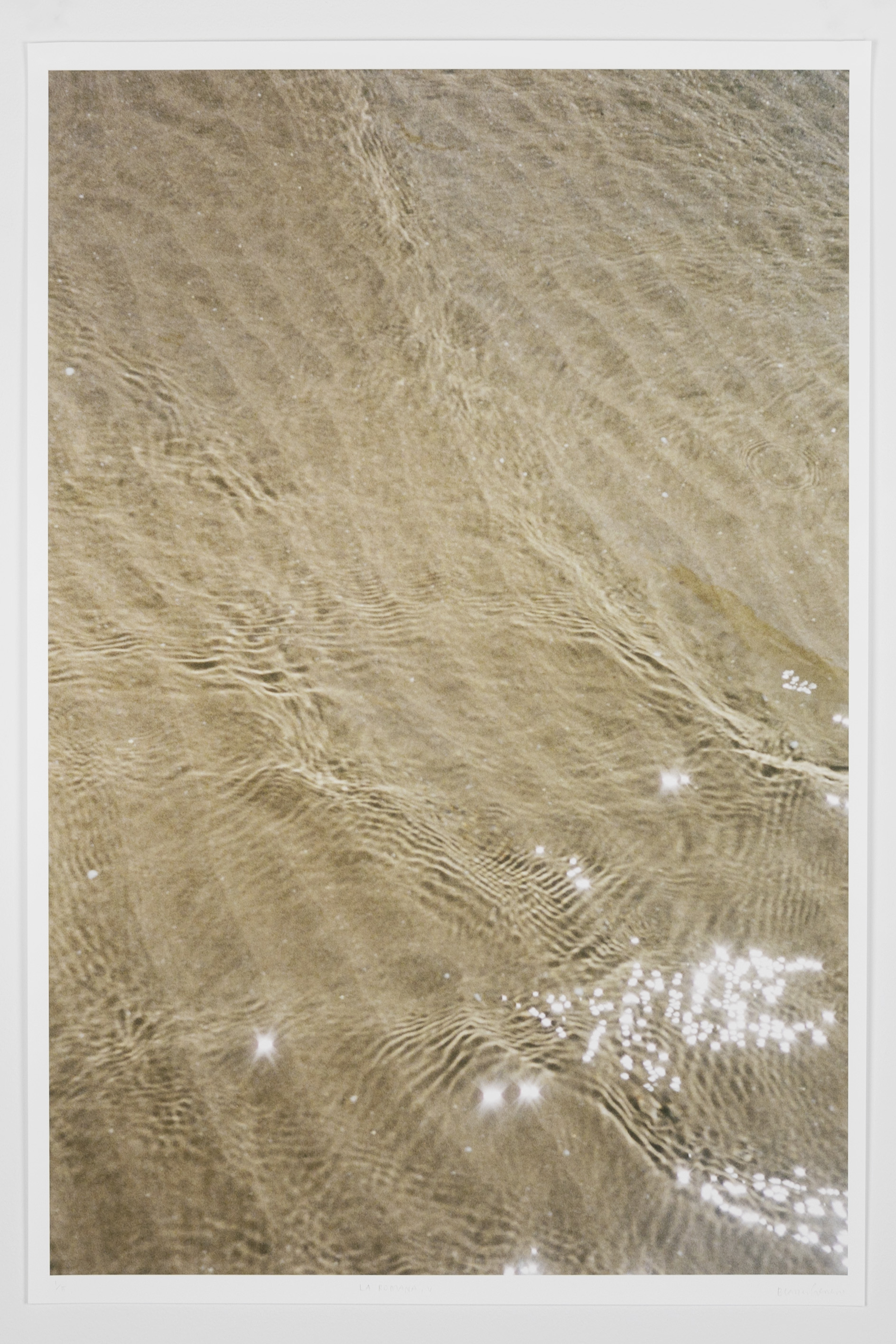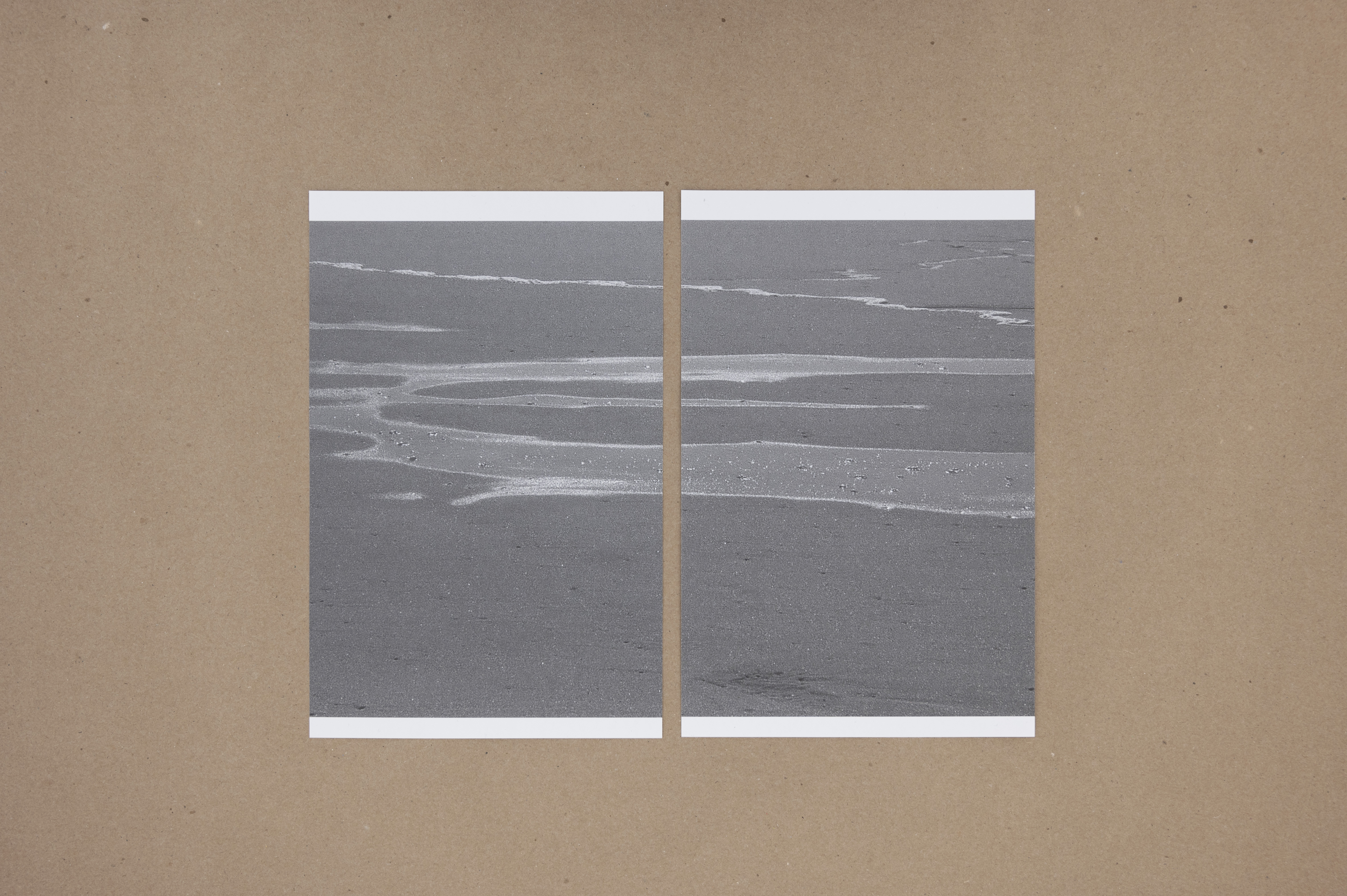Art Cake Resident Presentation Series - Blanca Guerrero
BLANCA GUERRERO IN CONVERSATION WITH MARINA GLUCKMAN
Marina Gluckman: Your presentation sun set : the long goodbye includes your paintings, collages, and photographs, as well as assembled items that inform your practice. This is the first time you have presented all three forms of media in which you work. Can you discuss the process of assembling and installing the works and the decisions that were made to present them together?
Blanca Guerrero: Assembling my works in this format felt like the most intuitive way to present what I have created here at Art Cake in the past 20 months. I have been so comfortable here creatively. It’s the first studio I have ever had to myself, and with everything that has happened in the past year and a half, it felt like an oasis; just for me.
I was putting a lot of pressure on myself to make this body of work feel very finished – especially since I am leaving New York after living here for 28 years. Reconciling with the enormity of that decision and trying to figure out how to boil it down into one presentation was producing anxiety. Eventually, I circled back to the tranquility and sense of harmony that creating work in this studio space has provided for me, and came to the conclusion that I should bring that natural feeling of balance into my presentation.
I wanted to take that sense of calm from my studio, walk it down the hall, and bring it to life within the presentation space. I chose to incorporate objects as well as collages, photographs, and paintings, all in the same space. This is how I always look at my work – everything is in relation to the other. The stones inform the marks inform the paper inform the brushstrokes inform the colors mixed inform my eye inform the moment I decide to capture water flowing through my camera lens.

MG: In 2017-2019, you made a series called Piedras which were abstract paintings that depicted close studies of rocks. These were the first works that I saw of yours. Over the past two to three years, your abstract paintings focus on the harmonious moments in which elements from nature move in tandem to create a tranquil moment in space. Often, you closely crop your abstract compositions on intimately-sized wooden panels to emphasize the untouched, natural beauty of currents in motion. Could you talk a little bit about the process of creating a painting in your studio? How do you achieve the fluidity and sense of movement in your compositions with acrylic paint?
BG: Leading up to creating a painting in studio, I start with a series of motions that maintain a certain consistency. First, I clean my entire studio. I can’t work unless everything is in its place. I need my mind to be clear of distractions. Then, I’ll put on relaxing music, brew some tea, and start preparing my surfaces. I always paint on wood panels, so that means I prepare the panels with gesso, sanding in between each layer. This might take a few days with drying time in between. I prepare various panels at once, because prepping takes time but also because I like to work on various paintings simultaneously. This takes the pressure off of creating one perfect piece. Once the panels are ready to go, I set them down on the floor or lean them up against the wall in front of me. This is when I start to mix my colors. Sometimes, I’ll go through my phone and look at swaths of photos I’ve taken recently, scrolling through quickly to remind myself of the tones that were surrounding me in that particular moment. More often though, I just start mixing. I like to have all my materials laid out in front of me; my paints, brushes, water, etc. I work with a palette knife and different brushes to come up with a palette with which I begin to build layers onto the panels. I use plenty of water and matte medium. I use construction or ceramics tools for pressing the paint and pulling it across the surface. Sometimes I use my orbital sander between layers, and I always keep lots of rags around to manipulate the paint- removing almost as much as I add on. My hands also come into play, and I end up pretty covered in paint by the end of it. Often, it’s a really immersive experience; frustrating at worst and meditative at best. Sometimes paintings take me months, even years, to complete. Other times I get the exact surface quality I didn’t even know I was after in just 20 minutes.

MG: Do you tend to work in horizontal or vertical format more frequently?
BG: Lately, I have been working in vertical format more frequently than horizontal. Especially because my latest paintings reference invented landscapes. I like the idea of painting a landscape vertically in the traditional portrait format, as opposed to horizontally which is the classical format for landscape artworks. It feels more personal. I also love a square format; this might be the most freeing of all.
MG: Your series Corrientes in 2020 explored elements found in nature. In the body of work, you pursued close examination of the layers of movement over water and through wild grasses caused by recurring currents. Are the paintings in sun set : the long goodbye a continuation of this series or have you introduced new motifs?
BG: Even though I do name my works as series with different titles, the lines are very blurred as to where one series ends and the next one begins. Often, I find I’ve titled a painting twice, placing it in two different series by mistake. This is because my work is very fluid, and the paintings all talk to one another. After my Corrientes series, I moved on to Paisajes Inventados, which translates to Invented Landscapes. It was almost as though I just pulled the perspective back from where my mind’s eye was looking when I was painting my Corrientes series. Often, these transitions don’t even happen intentionally. I’ll be painting or looking at some completed pieces and a new title comes into my mind, and I just move forward from there.
MG: Aesthetically, there is a consistent color palette of cool muted tones throughout your presentation. How has your color palette shifted throughout the years? Last year, you introduced more earthy tones after a trip to Spain. Does travel greatly affect your art practice?
BG: My color palette shifts gradually and slowly. I think I am very sensitive to color – over the years I have realized that I appreciate almost imperceptible shifts in tone. When new colors or hues appear in my paintings, it’s usually subconscious. But upon looking back, which is when I learn the most about myself and my work, I realize that: yes, something I looked at, maybe even photographed, has seeped into my color palette. Travel definitely affects my art practice, it’s often when I spend a lot of time carefully looking at and photographing my surroundings.
MG: Unlike your recent painting series where the composition extends to each end of the panel and often on the sides as well, your collages contain much more negative space. Can you talk about the construction elements within your collages? How long have you been making these works and where do your source your materials?
BG: In the winter of 2011, I traveled to Japan with a RISD printmaking class for a month-long trip. While there, we learned how to make traditional Japanese paper, or washi. From cutting down the kozo trees, to pulling sheets through troughs of cold water in a beautiful workshop space. It was such a time-consuming process that when I got back to studio a month later and looked at the stack of paper I had made – I was incapable of using it. About 5 years went by until I came back to the sheets, ready to confront them again. I started painting the washi, and collaging it onto panels. It was so precious to me that I saved every single scrap. This is where the Papeles, or collages series, began. 2016. At the time I was working full-time in an office, and when I’d come to studio feeling braindead from staring into a computer all day, I found it difficult to make anything. So, I came up with various processes that lent themselves to curing my brain fog. Shifting small scraps of painted washi across watercolor paper was perfect. It was calming but didn’t feel too precious.
Since then, it’s become a habit to come back to collage when I feel stuck in my painting process. Or when I’m in the mood to do something different, or when I’m waiting for gesso to dry. It is also meditative, in a different way than painting. It feels like a puzzle, or an exercise, in coming up with a balanced composition. It is also very satisfying to repurpose scraps of my own making and transform them into something clean and presentable.


MG: Like your paintings, your photographs are closely cropped to focus on the textural surfaces of landscapes and natural elements. Here, your three photographs on view capture shallow water rippling over sand. Where are the photographs taken? Can you also talk more about your photography process and how it informs and compliments your painting practice?
BG: La Romana IV, La Romana V, and La Romana VI are all taken at an eponymous beach in Spain. I grew up going to this beach, and my mother went there for many summers before I was born. It’s on the Mediterranean, it gets absolutely full of people in the summer months, and the water is very shallow. I used to go regularly, every summer, until I was about 20. In the past few years, I started going back for a few days in early summer, before it fills up with regulars. It has been interesting to revisit a place I knew so well when I was younger as an adult. The past few times I have been back, I walk along the shore like I did for years, this time trying to capture the light and shadow coming through the shallow waves rippling across the sand that have embedded themselves into my memory.
Photography has always been something that I’ve done, alongside my studio practice. It feels like a sketchbook or diary, more natural and less intentional. I like to have my camera on me, and I prefer to shoot with film. I tend to shoot abstracted moments of movement or stillness, motifs which form a large part of my painting practice as well.
MG: As a concluding presentation to your residency at Art Cake, sun set : the long goodbye offers an overview of your practice, focusing on the work that you have made since 2019 and throughout the pandemic. Together, the work presents a sequential experience that illustrates your visual language.
Do you have any projects on the horizon? Where can we follow your work when you move to Spain?
BG: I am moving to Spain in September, and one of the first things I’ll do is set up my new studio space. I’m hoping to get a big studio, with natural light, where I can work on a larger scale. I have some potential projects coming up that involve some sizable paintings, and I’m looking forward to those panning out. I will continue making collages and taking photographs, and might experiment with some new mediums I have been wanting to try.
Before that, I will be featured on slowdown.tv August edition of their #HandMarkingTime series. Be sure to tune in @slowdown.tv
You can follow my work on my website blancaguerrero.net as well as on my Instagram @blanca._.guerrero

